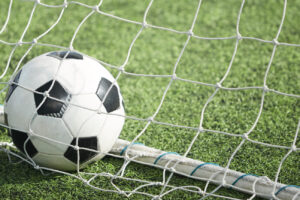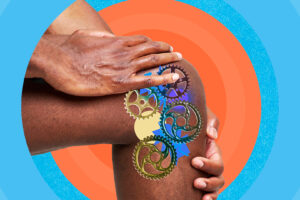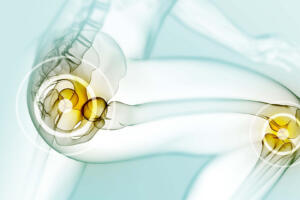You don’t need to be a professional athlete to suffer an anterior cruciate ligament (ACL) tear. Luckily, you also don’t need to be a professional athlete to access a state-of-the-art surgical approach to repair the injury.
The ACL is a ligament in your knee that attaches the tibia (shinbone) to the femur (thighbone). Approximately 400,000 Americans suffer ACL injuries each year, including young, active people and athletes of all levels. When the ACL is torn, the knee becomes unstable or loose, requiring surgery.
The traditional approach to treatment is ACL reconstruction. During surgery, an orthopedic surgeon removes the torn ACL and replaces it with a graft (transplanted tissue) from another part of your leg or a donor. However, up to half of all patients with an ACL reconstruction using their own patellar tendon as a graft report pain when kneeling later in life, according to CentraState orthopedic surgeon Michael J. Greller, MD, MBA.
Dr. Greller and fellow orthopedic surgeon Garret L. Sobol, MD, are the first surgeons in Monmouth County to perform ACL repairs using a bridge-enhanced ACL Restoration (BEAR®) implant. The implant uses a patient’s own blood to help heal the torn ends of the ACL back together.
Promoting Natural Healing
During the minimally invasive procedure, a surgeon injects a small amount of the patient’s blood into the implant and places it between the torn ends of the ACL. The combination of the patient’s blood and the BEAR implant, which is made of collagen, enables the ACL to heal while maintaining its original attachment to the tibia. As the ligament gets stronger, the body absorbs the implant.
“The implant acts as a bridge to help the ends of the ACL grow back together,” Dr. Greller explains. “This is the first procedure designed to help the body heal a major ligament. Instead of replacing it, we’re repairing it.”
After the outpatient surgery, patients complete a structured rehabilitation program that gradually introduces movement, bending and pivoting exercises as healing progresses. Most patients fully recover in seven to nine months.
“Our goal is to get patients back to playing sports with their normal anatomy and function,” Dr. Greller says. “With BEAR, 86 percent of patients return to pivoting sports within a year.”
The Benefits of BEAR
Compared with traditional ACL reconstruction surgery, the benefits of the BEAR approach include:
- Less invasive surgery, since this approach doesn’t require a second surgical site to harvest a graft
- Reduced pain
- Less loss of muscle strength
- Faster recovery
- Fewer surgical complications
- Increased patient satisfaction
“BEAR also provides flexibility if a patient suffers a retear, because we have the option to either repair it with another implant or through traditional reconstruction surgery,” Dr. Greller explains. “However, once traditional ACL surgery is performed, we can’t graft using the same tendon again.”
BEAR candidates must be at least 14 years old and have a portion of the ACL still attached to the tibia. In addition, the procedure must be performed within 50 days of the injury.
“Patients don’t need to travel to New York or Philadelphia to undergo highly advanced orthopedic procedures,” Dr. Greller concludes. “CentraState’s surgical outcomes are equal to facilities in larger cities.”
Learn more about orthopedic services at CentraState, visit centrastate.com/orthopedics or call 866-CENTRA7 (866-236-8727).





